Amazing discoveries and experiences await you in every issue of National Geographic magazine. The latest news in science, exploration, and culture will open your eyes to the world’s many wonders.
Responding to a Rapidly Changing World
Valuing the Lakes (From a Distance)
AS SEEN FROM THE GROUND • LOOKING AT THE EARTH FROM EVERY POSSIBLE ANGLE
THE BACKSTORY • FUNGI ARE GOOD INDICATORS OF THE STATE OF A FOREST: WHEN THEY FLOURISH, SO DO MANY OTHER LIFE-FORMS
Celebrating in the Pandemic • WE’RE MISSING HOLIDAY CLOSENESS JUST WHEN WE NEED IT MOST. BUT EVEN GRIM, UNCERTAIN TIMES HOLD SPARKS OF LOVE AND LIGHT.
KATY CROFF BELL
POLLEN SPECIAL DELIVERY • DECLINE OF INSECTS LEADS SCIENTISTS TO EYE NEW WAYS TO POLLINATE PLANTS. ONE IDEA: DRONES
SABER-TOOTHED GIANT
MEGA-CAT • In North America, the jaguar-size Smilodon gracilis was found mostly in what is now Florida and Pennsylvania; the slightly larger S. fatalis is best known from tar pit fossil beds in California. Those two species and the larger S. populator all roamed South America.
CROWNING GLORY • TRADITIONAL HEAD DRESSES RULE AGAIN IN UKRAINE.
THE STATE OF WOMEN
ENHANCED BY SCIENCE, COLORFULLY
LUCKY CHARMS • Around the globe, artful objects offer hope and cultural connection.
National Geographic Magazine
SO GREAT, SO FRAGILE • THE GREAT LAKES HOLD 84 PERCENT OF NORTH AMERICA’S SURFACE FRESHWATER. THEY HELPED MAKE THE UNITEDS TATES AN AGRICULTURAL AND INDUSTRIAL POWER HOUSE. BUT NOW climate change, POLLUTION, and invasive species THREATEN THE CONTINENT’S MOST VALUABLERE SOURCE.
GREAT LAKES IN PERIL
ICE-CARVED TREASURES
FARMING’S IMPACT
A FOOD WEB DISRUPTED
A THIRD COAST
Songs to Soothe • In cultures around the world, the lullabies that coax children to sleep are windows into parents’ hopes, fears, and dreams for the future.
ARCTIC DREAMING • LIVES AND LEGENDS ARE FROZEN IN TIME DURING THE LONG POLAR NIGHT OF RUSSIA’S FAR NORTH
ON A QUIET AND WINDLESS DAY, • Vyacheslav Korotki drifts alone in his handmade boat on a narrow bay of the Barents Sea near the Khodovarikha Meteorological Station. He has spent most of his life in remote Arctic stations and says he loves this particular area he’s called home for two decades.
‘I BROUGHT TREATS LIKE CHOCOLATE AND FRUIT,’ • Arbugaeva says. “These little things are like gold in the Arctic and brought the biggest smile to [meteorologist and lighthouse keeper] Evgenia Kostikova’s face. She wrapped the apples one by one in newspaper, as if they were made of crystal, to prevent them from freezing.”
‘WHEN WE WERE SURROUNDED BY WALRUSES, • the hut was shaking,” Arbugaeva says. “The sound of their roaring was very loud; it was hard to sleep at night. The temperature in the hut was also raised dramatically because of the walrus body heat outside. At this massive Pacific walrus rookery, so many had hauled out on shore—about 100,000—because the warming climate meant less sea ice for them to rest on.”
‘I IMAGINED THE MUSIC PLAYING AND THE STARS • sparkling in unison after I first entered the quiet room,” says Arbugaeva. “But then I began to hear the wind slamming doors in the corridor and strange creaking sounds. In my fuzzy imagination I thought I heard someone’s footsteps … and I ran.”
Bites That Kill
Zones of risk
LUCAS FOGLIA • FROM OUR PHOTOGRAPHERS

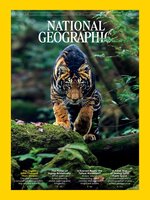 Oct 01 2025
Oct 01 2025
 Sep 01 2025
Sep 01 2025
 Aug 01 2025
Aug 01 2025
 Jul 01 2025
Jul 01 2025
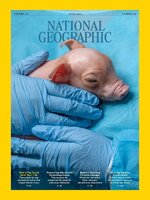 Jun 01 2025
Jun 01 2025
 May 01 2025
May 01 2025
 Apr 01 2025
Apr 01 2025
 Mar 01 2025
Mar 01 2025
 Feb 01 2025
Feb 01 2025
 Jan 01 2025
Jan 01 2025
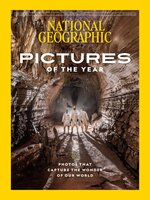 Dec 01 2024
Dec 01 2024
 Nov 01 2024
Nov 01 2024
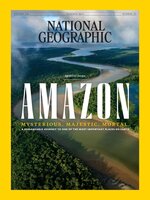 Oct 01 2024
Oct 01 2024
 Sep 01 2024
Sep 01 2024
 Aug 01 2024
Aug 01 2024
 Jul 01 2024
Jul 01 2024
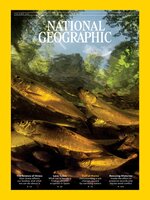 Jun 01 2024
Jun 01 2024
 May 01 2024
May 01 2024
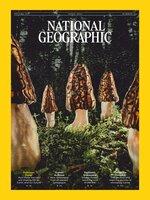 Apr 01 2024
Apr 01 2024
 Mar 01 2024
Mar 01 2024
 Feb 01 2024
Feb 01 2024
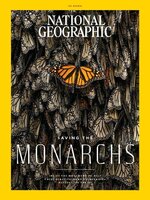 Jan 01 2024
Jan 01 2024
 Dec 01 2023
Dec 01 2023
 Nov 01 2023
Nov 01 2023